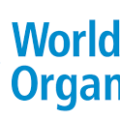Guidelines for Assessing and managing children at primary healthcare facilities to prevent overweight and obesity in the context of the double burden of malnutrition
As part of its response to the global epidemic of obesity, World Health Organization has issued new guidelines to support primary healthcare professionals and workers to identify and manage children who are obese or overweight, in specific terms all infants and children aged less than 5 years presenting to primary health-care facilities should have both height and weight measured in order to ascertain their weight-for-height and their nutritional status with respect to World Health Organization child growth standards. Comparing a child’s weight with norms for its length/height has been proven as an effective way to assess for both overweight and wasting.
Where infants and children are identified as overweight, the World Health Organization recommends the provision of counselling services to parents and caregivers on nutrition and physical activity including encouragement for exclusive breastfeeding for first 6 months of life and continued until 24 months or beyond. If a child is obese, there should be further assessment and an appropriate plan should be developed for the management of the condition.. This can be achieved by a health workers at primary health-care level, if they are adequately trained.
In Addition, moderate wasting and stunting are potential risk factors for children becoming obese or overweight. In order to avoid the risk of overweight and obesity the World Health Organization recommends that formulated supplementary foods should not be provided on a routine basis to children who are moderately wasted or stunted.
Click Here to Download New WHO Guidelines for Assessing and managing children at primary healthcare facilities to prevent overweight and obesity in the context of the double burden of malnutrition





